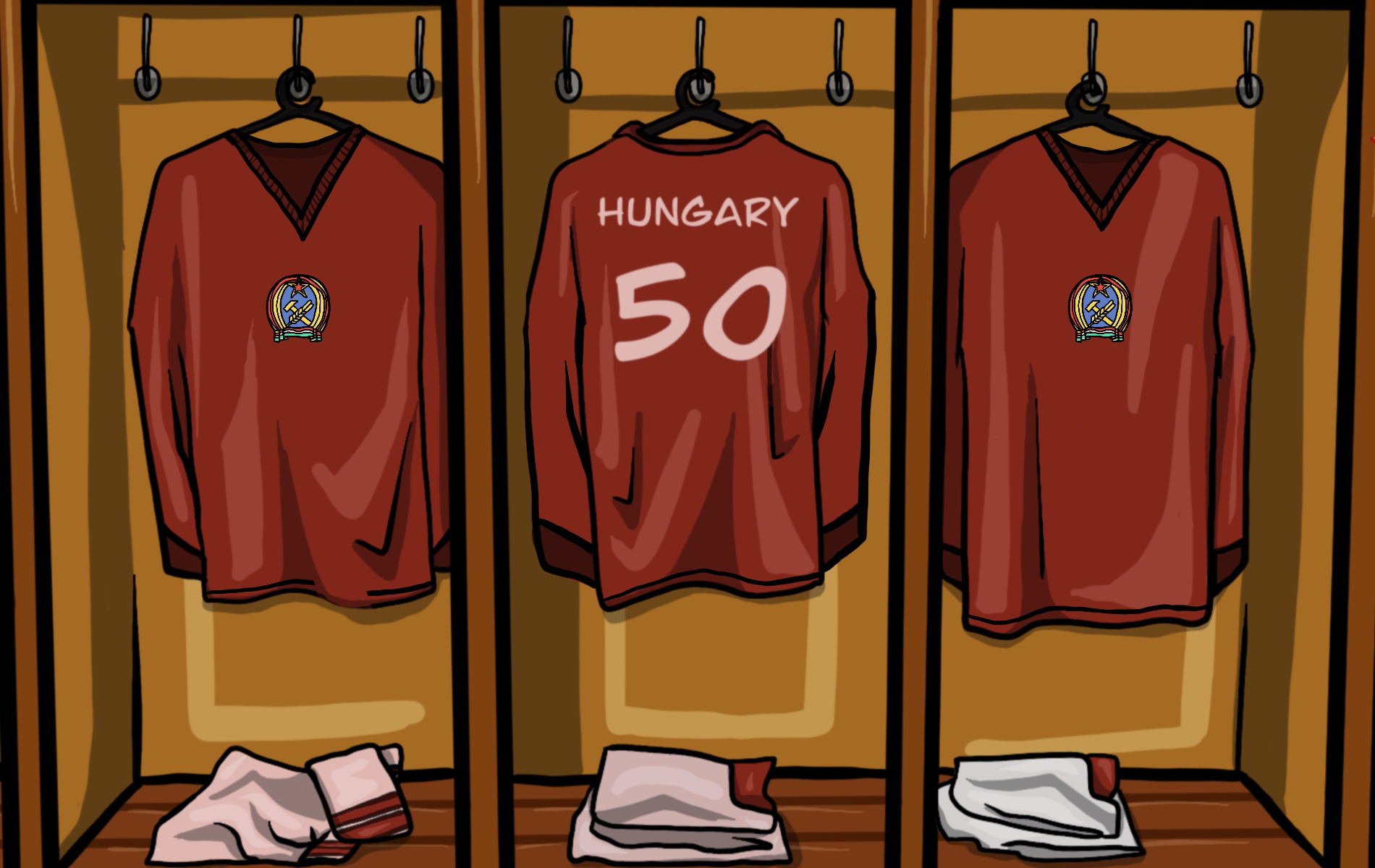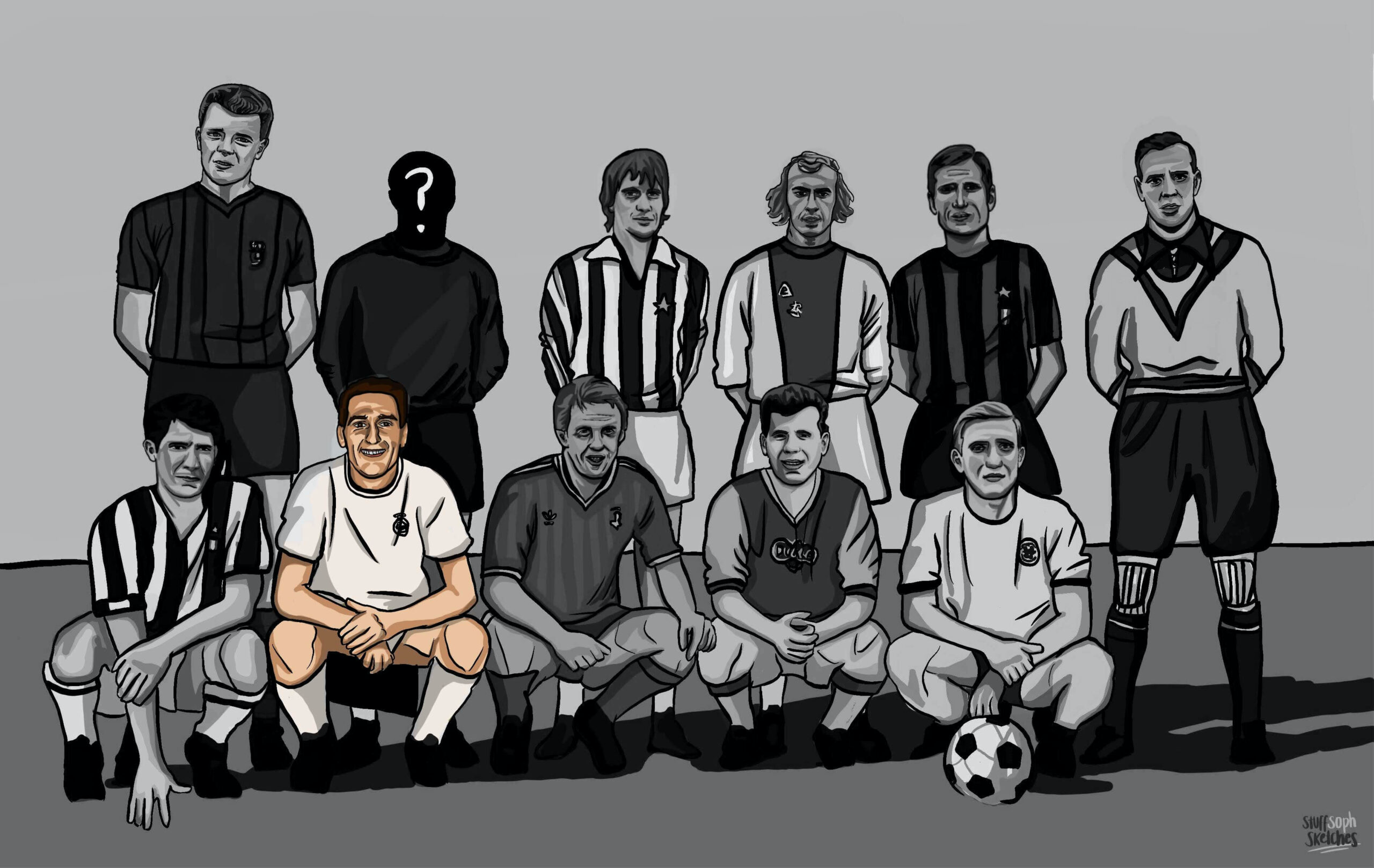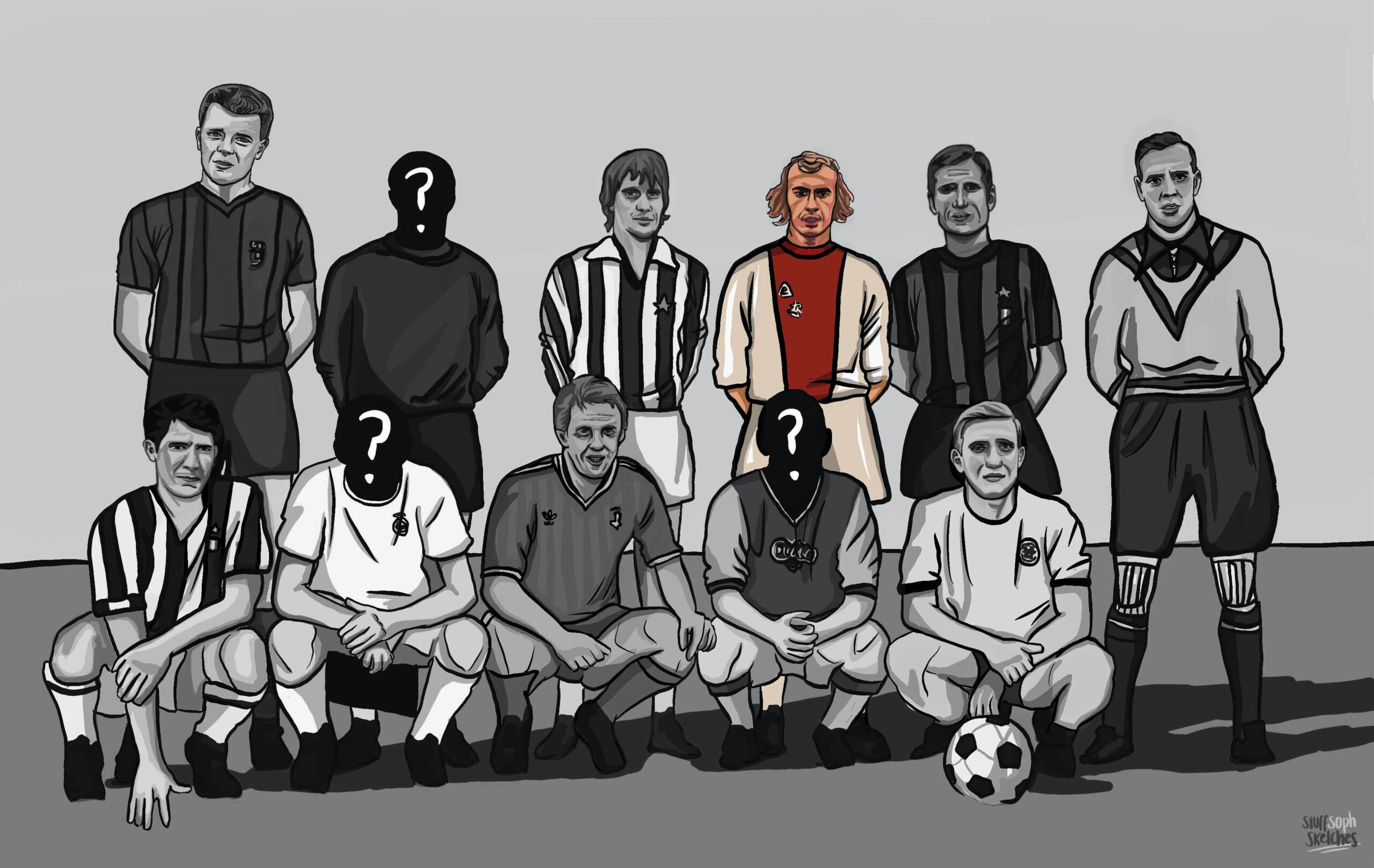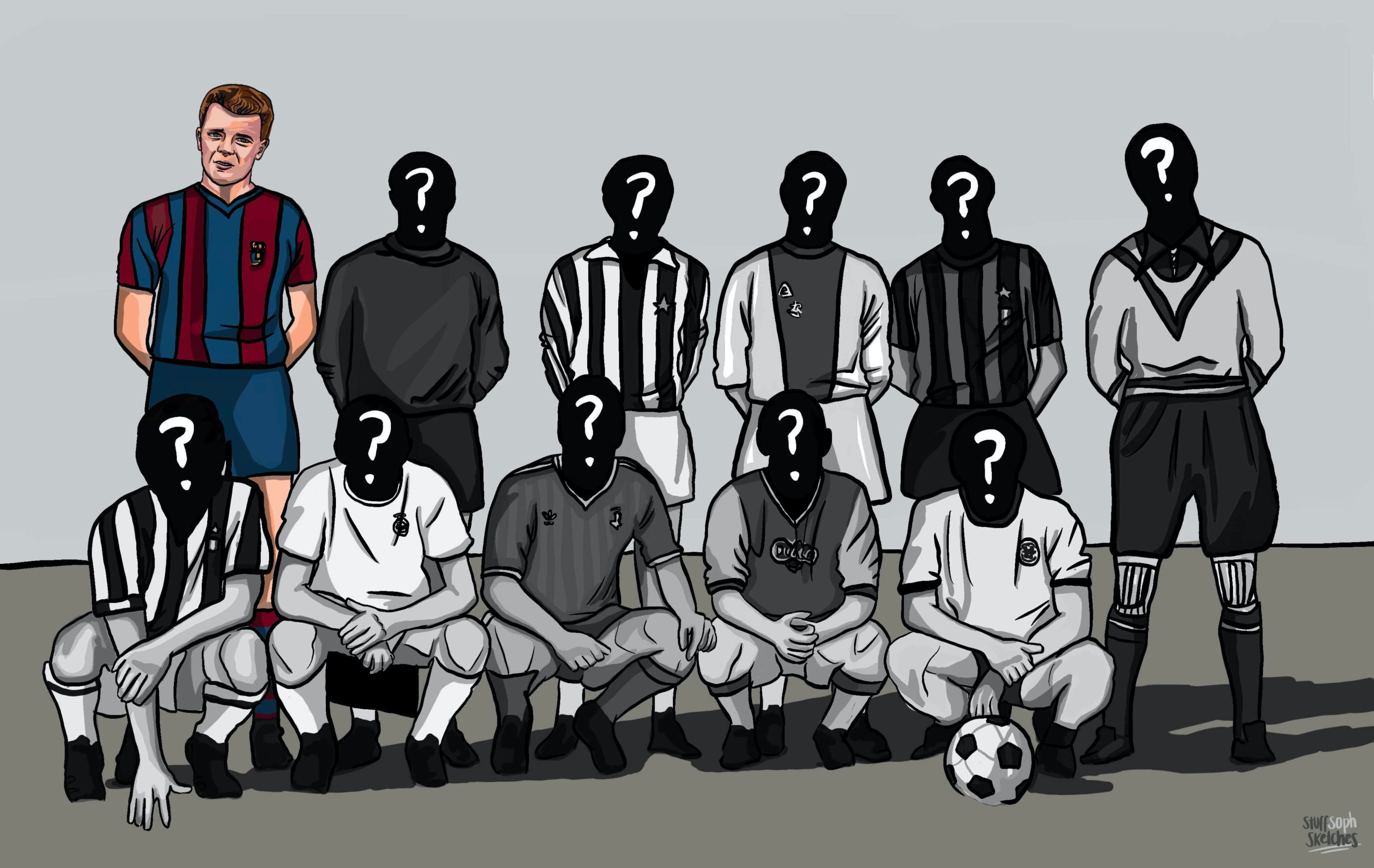A Long Read (25 minutes)
On 25 November 1953, Hungary – the highest ranked international team in the world – faced England at Wembley stadium in a game that would later be described as “the match of the century”. On home soil, England had lost only once to an international team outside of the United Kingdom and never at Wembley Stadium, “the home of football”. Their team included: Sir Stanley Matthews, the first player to receive the European Footballer of the Year award, Sir Alf Ramsey, who later achieved legendary status as a manager of the national team and Billy Wright, the first English player to reach one hundred international caps. At the time, England’s international record led to a great deal of arrogance and complacency. They seemed to ignore coaching and tactical advances from Europe, believing that English players were physically and technically superior to their foreign counterparts. Hungary, on the other hand, included the great Ferenc Puskás, Sándor Kocsis and Zoltán Czibor and was the brainchild of the Deputy Sports Minister, Gustáv Sebes. Under the guidance of Sebes and with the intention of furthering sporting excellence, Hungary were at the forefront of a tactical and training revolution.
Hungary played like the team they were, the best in the world, whereas England – whose self-proclaimed invincibility at home was about to be crushed forever – were made to look like a side relegated from the football league.
It seems inevitable for an English football fan when discussing the great Hungary side of the 1950s to begin telling the story from the moment that the “Magical Magyars” visited England and, for ninety glorious minutes, taught the Three Lions a lesson. If the English FA had been paying attention, the Austrian Wunderteam of the 1930s had almost defeated England in 1932 by playing what can be described as a precursor to the Hungarian style, one that would be developed even further by the “Total Football” of the Dutch in the 1970s. However, England and the FA had not been paying attention and their complacency was to be their downfall. Sticking rigidly to their positions, they had no answer to the short sharp passing, interchanging positions and the movement around the pitch that the Hungarians displayed. Hungary would win the match 6-3 but the score could have easily been more emphatic, and the writing was on the wall for the English sense of superiority – not that the FA had realised it, quite yet.
Considering the result to be a one-off, England played a return fixture a year later in Hungary. The Magical Magyars outclassed them yet again, this time winning 7-1. But these weren’t fluke results for the Hungarians. Between 1950 and 1956, Hungary lost only once, winning forty-two and drawing seven of the fifty international matches that they played in this period as well as winning gold at the Olympics of 1952. Their one defeat happened to be the most important game that they played, losing to Germany in the World Cup final of 1954. The team played with a fluidity and skill that had not been seen before and, considering the conditions under which they played, perhaps has not been seen since.
Whilst primarily credited for the creation of the “Magical Magyars”, Gustáv Sebes (Deputy Minister of Sport and then Head Coach from 1950) was not alone in helping revolutionise the Hungarian national team during this period. Nonetheless, Sebes’ meticulous planning and implementation of fitness regimes was instrumental. In preparation for the England game in 1953, the heavier footballs used by their opponents were imported for the team to train with and the dimensions of the training pitch were enlarged to replicate that of the Wembley turf. Under strict instruction from Sebes, training matches were played in which the opposition imitated what he believed to be the English style of play. But it wasn’t simply tactical and training changes that Sebes made either. Inspired by the Austrians and the Italian national team that won the World Cups of 1934 and 1938, Sebes was convinced that the key to a successful international side was to have as many of the players playing regularly together at club level. When sport was nationalised after Hungary became a communist state in 1949, Sebes in his role as Deputy Minister of Sport was perfectly placed to put his beliefs into practice. First, Kispest AC, who included Ferenc Puskás and József Bozsik in their side, became the national army team and were renamed Budapest Honvéd SC. Through conscription to the army, Sebes was also able to recruit Sándor Kocsis, Zoltán Czibor, László Budai, Gyula Lóránt and the goalkeeper, Gyula Grosics to the team. In doing so, Sebes was then able to make Honvéd the training ground for the international team.
Of the remaining four players who played at Wembley in 1953, three came from Vörös Lobogó: Mihály Lantos, Jozsef Zákariás and Nándor Hidegkuti, whilst Jenõ Bugánoszky played domestically for Dorogi. At the time, Martón Bukovi was the coach of Vörös Lobogó and it is important not to underestimate his contribution to the tactical revolution of the Hungarian national team from 1950 to 1956. For example, it was Bukovi, and not Sebes, who first began playing his number nine deeper, in a more withdrawn role. When Höfling, his ‘tank’, was sold to Lazio in 1948, Bukovi decided to do away with the number nine all together rather than forcing unsuitable players to play in the traditional role. As the number nine was becoming marked so closely that he had no room, the idea was that it was better to move him deeper on the pitch where there was more space to allow him to become more effective. The first player employed to do this, first at Lobogö and then for the Hungarian national team, was Péter Palotás. Despite wearing the number nine, it was Palotás’ role to drop in and receive the ball from the defence and, from there, play the ball forward to the more attacking players.
At a time when football fans are used to seeing the likes of Messi playing the “False Nine” role, such a tactical revolution might not even register as important, but to those playing in the 1950s, it had never been seen before. Before squad numbers and substitutes, the number you wore corresponded directly to the position that you played, and football was a far more physical sport than it is today. Centre forwards wore the number nine and were expected to be powerhouses, whose role it was to remain up- front as the focal point of any attacks; what they lacked in technical ability, they made up for in aggression and strength. The role of the wide players (number seven and eleven) was to deliver crosses into the area for the battering-ram-style number nine to attack. Every number had a defined role in the traditional WM formation favoured by the English team in 1953; the goalkeeper wore number one, the fullbacks were marked with numbers two and three, a centre half would wear number five, the two central midfielders four and six, the two players advanced of these were eight and ten, eleven and seven were the wingers and your number nine was the centre forward.
Simply put, Hungary did not adhere to the traditional responsibilities for the numbers that were worn. Sebes was also a firm believer that each player should be comfortable playing in various positions and undertaking differing roles. Hungary’s tactical approach at this time, requiring each player to be able to fill varying roles in a game, was an early incarnation of the “Total Football” played by likes of Ajax and the Netherlands in general in the early 1970s. In fact, such was England’s rigid thinking and amazement at what they were witnessing, BBC commentator Kenneth Wolstenholme felt it necessary to explain at the start of the match that ‘you might be mystified by some of the Hungarian numbers. The reason is that they number their players rather logically with the centre-back as three and the fullbacks as two and four’.
Numbers weren’t the only difference between England and Hungary that day. To begin with, under Sebes’ watchful eye and much to the amazement of the English supporters, the Hungarians undertook their rigorous pre-match warm up that was designed to reduce injury. They also wore low-cut boots, prompting Billy Wright to whisper the immortal lines: “we should be all right here, Stan – they haven’t even got a proper kit”. After the coin toss, Puskás and Czibor juggled the ball between themselves, a common enough practice in Hungary, just to get a feel for the ball – but in England, this was simply considered as showing off. Not only that but wingers took throw-ins, the number nine dropped deep into midfield, the number five carried the ball and stepped out from the back and Puskás performed his drag-backs. For those lucky enough to have witnessed it, I am sure that the list of differences is infinite. Watching the match today, the disparity between the two teams appears almost implausible. Hungary played like the team they were, the best in the world, whereas England – whose self-proclaimed invincibility at home was about to be crushed forever – were made to look like a side relegated from the football league.
It took Hungary less than one minute to score the opening goal. Hidegkuti, Hungary’s number nine, dropped off his marker and received a pass from Bozsik – ‘the number 5 who is not a centre half’. Having received the pass, Hidegkuti had time to weigh up his options, dummy, sidestep Harry Johnston and fire Hungary into the lead. Ten days before flying to England, Hungary had played Sweden in the inaugural match at their recently opened national sports stadium. Managed by the Englishman George Raynor and made up of semi-professional players, Sweden almost pulled off a major upset, drawing 2-2 in a match where it was the Hungarians who were relieved to hear the final whistle. Raynor and Sweden’s game plan had been to man-mark and neutralise, Hidegkuti (Raynor had previously stated that it was Hidegkuti and not Puskás or Kocsis that you needed to stop if you wished to be successful against the Magical Magyars). Yet, Winterbottom, the England manager, had not been paying attention. Instead, he opted to keep a deep defensive line that would only get close to Hidegkuti when he was within shooting distance. Winterbottom and his England team (particularly Harry Johnston – Hidegkuti’s marker) were about to be taught a footballing lesson over the next eighty-nine minutes of football. With HIdegkuti dropping deeper and deeper, England had no answer, so much so that Johnston, bemoaning his situation at half time, cried out “if I follow him into midfield, then I leave myself exposed at the back, but if I stay where I am, he is unmarked to do as he damn well pleases!”
In fairness to Johnston, by half time it was already too late. Hungary were winning 4-2, and despite Grosics, Hungary’s hypochondriac goalkeeper, making a world-class fingertip save from George Robb in the dying seconds of the first half, it was England who were relieved to hear the half time whistle. Hidegkuti had scored a second as well as Puskás. His first goal left the legendary Billy Wright lunging into thin air whilst performing a drag-back, a skill of which was duly applauded by the British fans who had never seen such a feat before. Writing in The Times, Geoffrey Green aptly described Wright ‘like a fire engine rushing to the wrong fire’. In truth, Hungary had eased their pace, allowing England to score and make it 4-2 before the break (Sewell and Mortensen with England’s goals). For the second half, Winterbottom decided that the only potential solution was to play the only way that they knew how, fast and ‘full blooded’.
For all their skill and tactical revolutions, Hungary were not a team of “soft continentals” and the focus on fitness and strength training was to pay dividends in the second half against Winterbottom’s men. In the second half, it was very much the English players who came off second best in their attempts to impose themselves physically upon their opposition. While Wright and Mortensen were off receiving treatment, Bozsik had the freedom to roam up the pitch and smash in a fifth goal and moments later, Hidegkuti had his third disallowed. But he was not about to be denied his hattrick. In the fifty-sixth minute, Hidegkuti’s third was volleyed home after a lobbed pass from Puskás. Understanding that the game was now lost, the English concentrated on keeping the score-line down to avoid further embarrassment. Alf Ramsey did score a third English goal from the penalty spot, but it didn’t matter, England had been outclassed at Wembley for the first time in their footballing history.
However, the celebrations were muted for the Hungarians. The English couldn’t leave Wembley quick enough but, with no Hungarian fans in the stadium, the Hungarian players were left to contemplate the enormity of what they had achieved tucked away in the opposition dressing room. The following morning, the English press and players were quick to acknowledge the lesson that the national team had experienced at the hands of the Hungarians. Stanley Matthews admitted that the result did not even truly reflect the Hungarians superiority. Tom Finney, injured for the match, remarked that the Hungarians were almost too brilliant for words whilst Frank Cole, writing in the Daily Telegraph, rightfully acknowledged the Hungarians as the new masters of the sport. Somewhat surprisingly, the English FA decided that the score-line was a freak result, an “off-day”, and challenged Hungary to a rematch in Budapest the following year. Hungary happily accepted the challenge…
While the English FA foolishly ignored the result at Wembley, the rematch in May 1954 extinguished any notion that the English might enjoy any form of superiority in the world of football. Hungary dismantled England 7-1, inflicting England’s heaviest international defeat to date (the players were happy enough just to keep the score below double figures). It now appeared that nothing would stop Hungary from winning the World Cup. However, just as they would twenty years later, West Germany denied the greatest team of their generation a World Cup title. Beating Uruguay as the holders in the semi-final and having scored seventeen goals in just two group games (Kocsis scored eleven goals in the tournament as a whole) meant that the Hungarians were in good stead to compete with the West Germans. But despite leading 2-0 within the first ten minutes, Hungary lost the game 3-2. Hidegkuti hit the post, Kocsis hit the bar, Puskás had a goal disallowed, Germany’s Turek made four great saves, and the “Magical Magyars”, in the biggest game of their nation’s history, lost a football match for the first time in four years.
When returning from England the year before, the players were seen as conquering heroes. After the World Cup final of 1954, the story was very different. Riots had broken out and the Police were stationed outside of the manager’s and some of the players’ homes. They were abused, branded as ‘traitors’, and the perks and privileges that they had enjoyed before the World Cup vanished. Grosics was the first to fall victim to the loss of one particular privilege, that being official’s turning a blind eye to the extra income players made from smuggling items into the country and selling them on the black market. He was first placed under house arrest to answer a charge of espionage, a charge which carried with it the death penalty, before eventually being banned from football for a year. Grosics’ crime? Asking a teammate to bring back a box of hairpins.
Whilst the “Magical Magyars” would go undefeated for two years after their World Cup defeat, the Hungarian uprising of 1956 was to be the death knell of the country’s greatest ever international football team. Puskás, Czibor, Grosics and Kocsis all taking advantage of a Honved footballing tour, defected and chose not to return to Hungary. Grosics would eventually return and play in the World Cup of 1958, but this team were not of the same vintage as their predecessors. Puskás, Czibor and Kocsis would all eventually end up playing in Spain after being banned from football for up to eighteen months. Czibor and Kocsis would join the already exiled László Kubala at Barcelona, whilst Puskás landed at Real Madrid after Inter had assessed that their money would be better spent on thinner, younger players. Inter’s loss would become Madrid’s gain. Despite his portly frame, Puskás helped Madrid win three European Cups in 1959, 1960 and 1966, scoring four goals in the 7-3 victory against Eintracht Frankfurt in the 1960 European Cup Final (now the Champions League). Czibor and Kocsis’ European Cup story was not to be as successful with Barcelona losing to Benfica in the final of 1961. Incidentally, this final was played at Berne, where seven years earlier the pair had suffered the defeat to West Germany in the World Cup final.
The great Hungary team never won a World Cup, their international success amounted to Olympic Gold in 1952 and Central European Champions in 1953 (forerunner of the European Championship). They played a style of football that had never been seen before and, considering the conditions that the players had to cope with, will perhaps never be seen again. Yet, many football fans know nothing or very little about this great team. Watching the England versus Hungary match from 1953, seeing Puskás and Hidegkuti torment the Three Lions, is to watch the game that we love elevated to an artform. You can’t help but think of watching an artist at work as their paint strokes fill a blank canvas in front of them, oblivious to all around them. In that minute, they are both intrinsically part of the beauty in the world and apart from it, momentarily elevated above the world that they are in, seeing the world as it should and could be and not as it is. Time becomes irrelevant and moments either flash by suddenly or take an age to be enjoyed, but nothing else matters. Great professionals in any sport have that skill: Radcliffe keeping pace for miles, Federer effortlessly returning ground strokes, Gower performing a perfect cover drive for four or O’Sullivan taking to the table and manipulating a phenolic resin ball however he wishes. You could go on indefinitely, but as you watch England rigidly stick to their positions as if they were a foosball table with the Hungarians floating in-between with their crisp passing and imaginative movement, you are experiencing such a moment – a moment when a small country with a population of less than ten million showed the nation who helped give football to the world, just how it should be played.



